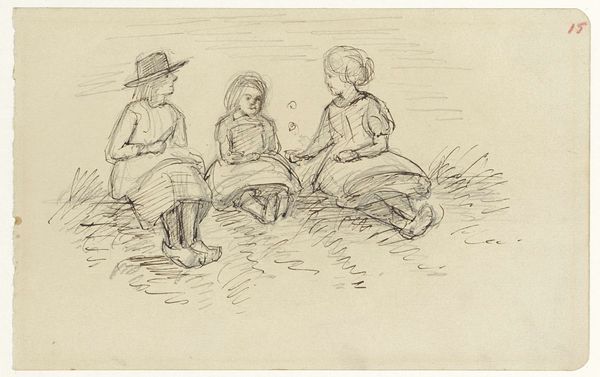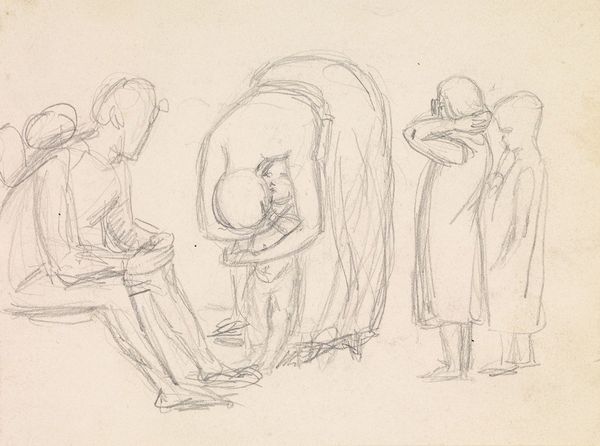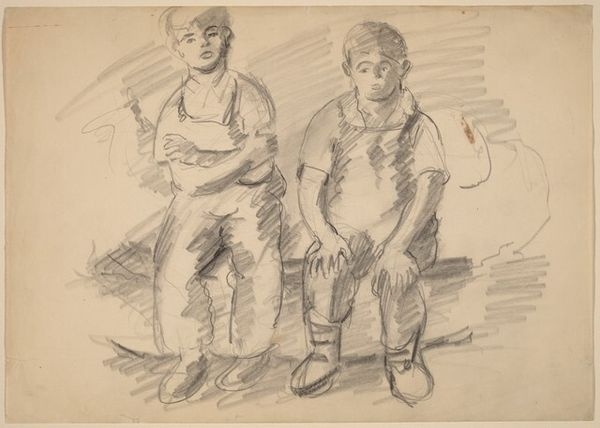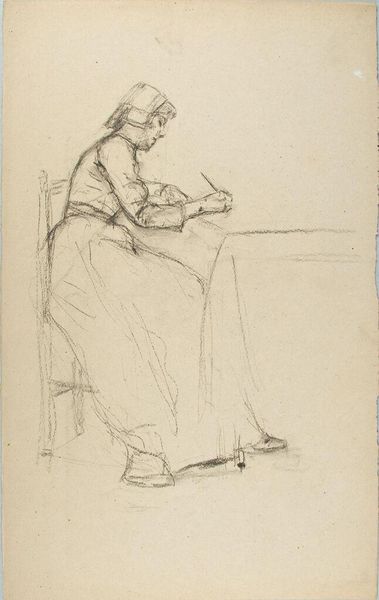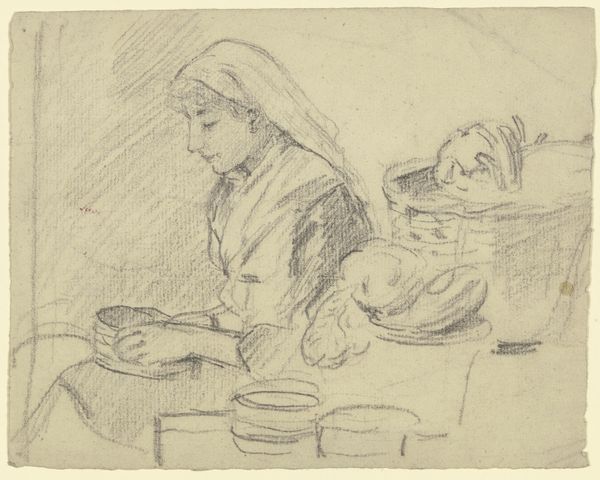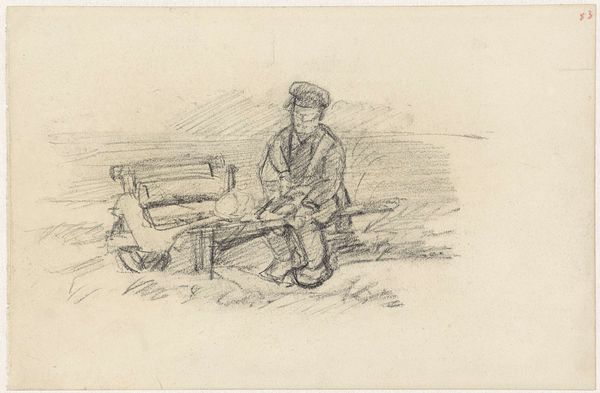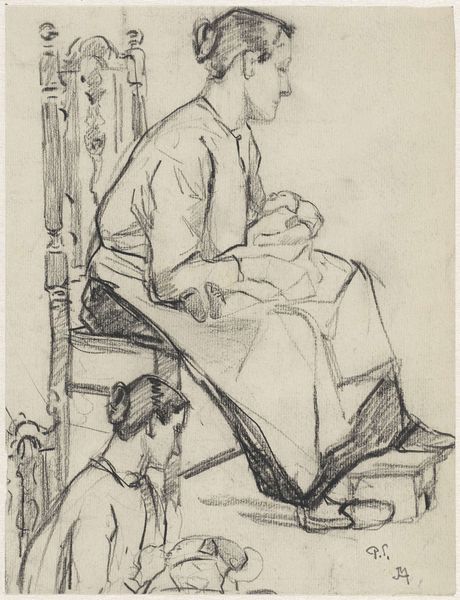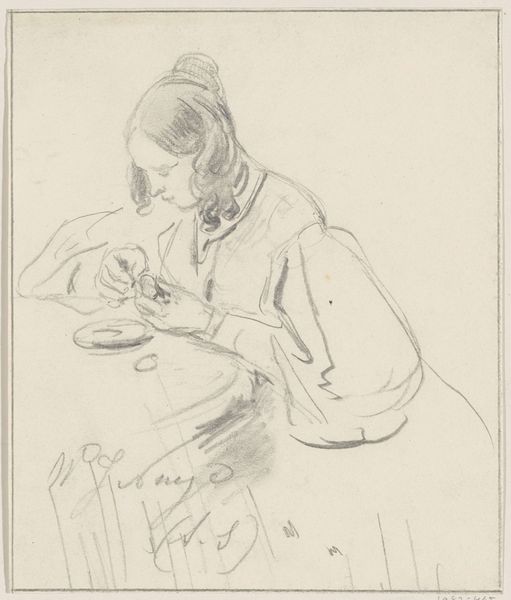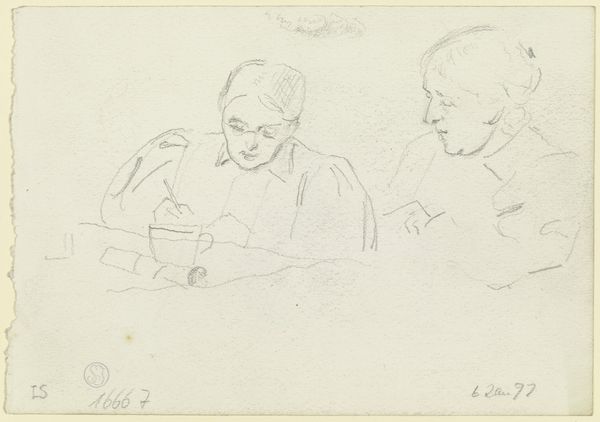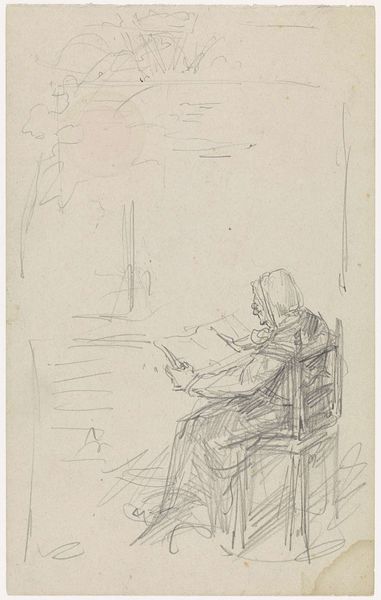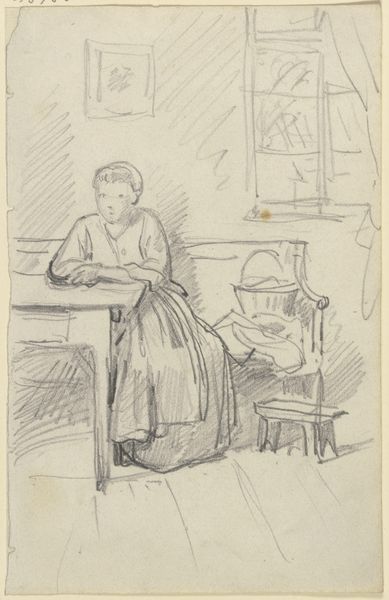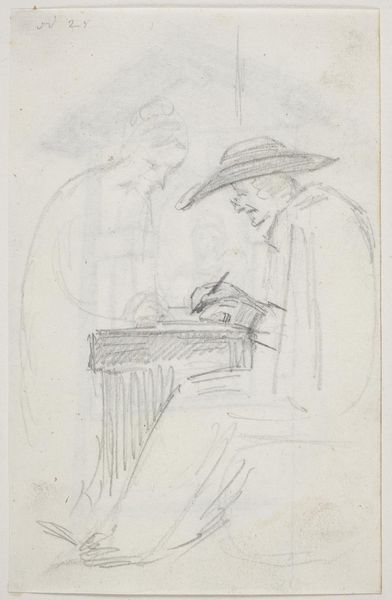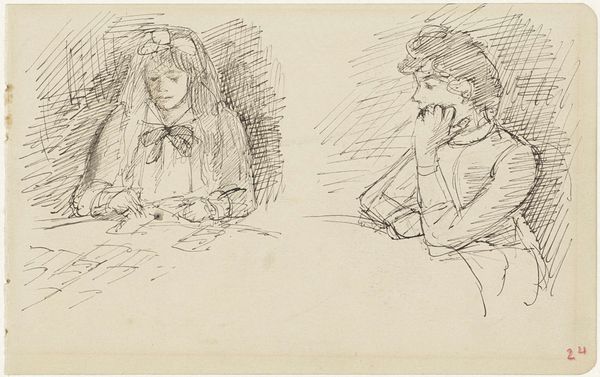
drawing, pencil
#
drawing
#
light pencil work
#
pencil sketch
#
landscape
#
figuration
#
personal sketchbook
#
idea generation sketch
#
ink drawing experimentation
#
pen-ink sketch
#
pencil
#
sketchbook drawing
#
pencil work
#
genre-painting
#
sketchbook art
#
realism
#
initial sketch
Dimensions: height 208 mm, width 310 mm
Copyright: Rijks Museum: Open Domain
Editor: This is "Twee zittende, schillende vrouwen" by Jozef Israëls, sketched between 1834 and 1911. It's a delicate pencil drawing. The subject matter feels very domestic, ordinary somehow, two women peeling something... maybe potatoes? What can you tell me about it? Curator: It’s intriguing to consider this seemingly simple sketch through a materialist lens. We see the product of Israëls' labour – the drawing itself, using readily available materials like pencil and paper. But let's think about the labour depicted. Peeling, in this context, what does it represent? Mundane chores performed daily... What were the social implications of this type of work in 19th century Holland? Editor: That’s interesting. So you're not so much focused on the artistic merit but more on what it shows about these women’s lives and work? Curator: Precisely. Israëls chose this subject. Why? What statement, conscious or unconscious, was he making about labor, class, and gender through this artistic choice? The material conditions of these women’s lives are literally being laid bare in this drawing. Notice how the sketch is light and airy yet they perform the task with a grounded and quite, laborious movement, how does that enhance the tension here? Editor: I never considered how a simple sketch like this could open up so many questions about social class. I usually just look at the aesthetic elements. Curator: Aesthetics aren't divorced from the material world. This sketch challenges traditional hierarchies. It elevates everyday labor, inviting us to contemplate the value we place on different kinds of work and different kinds of lives. Editor: That makes me see the artwork differently. Thanks for providing a new angle for me to appreciate this. Curator: Absolutely, I'm so glad it brought you to a new appreciation, you're welcome!
Comments
No comments
Be the first to comment and join the conversation on the ultimate creative platform.
